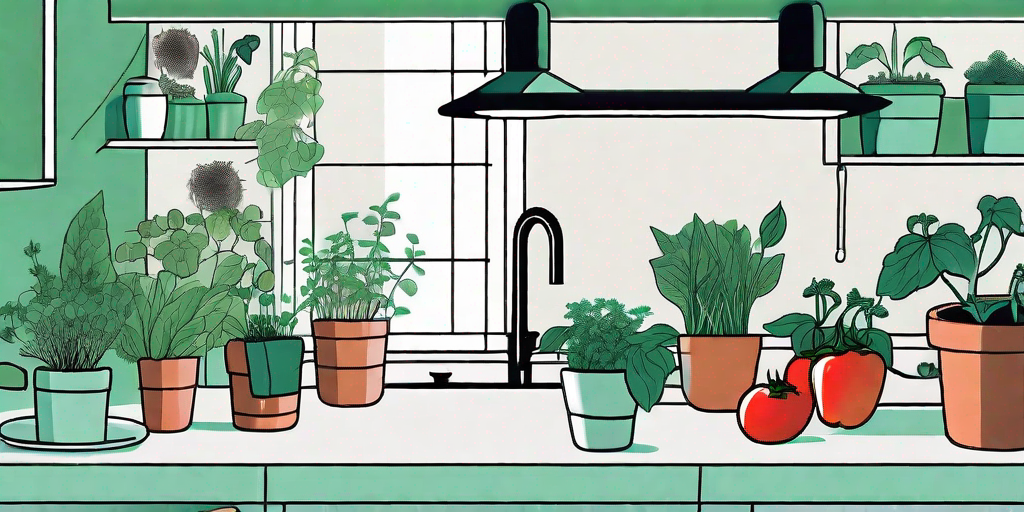
Ever dreamed of having a fresh supply of herbs, vegetables, and fruits right at your fingertips? No, we're not talking about a magical fridge that restocks itself. We're talking about growing your own indoor edible garden. With a little bit of effort and a lot of love, you can transform your kitchen into a green oasis that not only looks good but tastes good too.
Why Grow an Indoor Edible Garden?
Before we dive into the 'how', let's talk about the 'why'. Why should you consider growing your own indoor edible garden? Well, aside from the fact that it's a fun and rewarding hobby, there are several benefits to growing your own food indoors.
Firstly, it's a great way to ensure you always have fresh, organic produce on hand. No more last-minute trips to the grocery store when you realize you're out of basil for your pasta sauce. Secondly, it's a fantastic way to save money. Seeds and plants are often cheaper than buying produce from the store. Plus, you get the satisfaction of eating something you've grown yourself. Lastly, indoor gardening can be therapeutic. There's something incredibly calming about tending to plants and watching them grow.
Getting Started: What You'll Need
Now that we've convinced you of the benefits of indoor gardening, let's talk about what you'll need to get started. Don't worry, you won't need to transform your kitchen into a greenhouse. A few basic supplies will do.
Firstly, you'll need containers. These can be anything from traditional pots to mason jars. Just make sure they have good drainage. Secondly, you'll need soil. Opt for a high-quality potting mix that's suitable for indoor plants. Lastly, you'll need seeds or plants. Choose varieties that are suitable for indoor growing and that you'll actually use in your cooking.
How to Grow Your Indoor Edible Garden
Alright, let's get to the fun part - growing your indoor edible garden. Here's a step-by-step guide to get you started.
Step 1: Choose Your Plants
When choosing plants for your indoor garden, consider the light, temperature, and humidity in your home. Some plants, like herbs, are easy to grow indoors because they don't require a lot of light. Others, like tomatoes, need a lot of light and may require supplemental lighting.
Also, think about what you like to eat. There's no point in growing a bunch of cilantro if you can't stand the taste of it. Choose plants that you'll use in your cooking and that will thrive in your home's conditions.
Step 2: Plant Your Seeds or Plants
Once you've chosen your plants, it's time to get planting. If you're using seeds, follow the planting instructions on the packet. If you're using plants, make sure to give them plenty of room to grow. Remember, plants need room to spread their roots.
When planting, make sure to water thoroughly. The soil should be moist, but not waterlogged. Overwatering can lead to root rot, which is a surefire way to kill your plants.
Step 3: Care for Your Plants
Caring for your indoor garden is a labor of love. It involves watering, feeding, and occasionally talking to your plants (yes, it helps!).
Water your plants when the top inch of soil feels dry to the touch. Feed them with a balanced, water-soluble fertilizer every two weeks. And don't forget to give them plenty of light. If your home doesn't get a lot of natural light, consider using grow lights.
Common Challenges and How to Overcome Them
Like any new hobby, indoor gardening comes with its own set of challenges. But don't worry, we're here to help you overcome them.
Challenge 1: Lack of Light
Many indoor gardeners struggle with lack of light. If your home doesn't get a lot of natural light, your plants may struggle to grow. But don't despair, there's a solution: grow lights. These special lights mimic the sun's spectrum, helping your plants photosynthesize and grow.
Challenge 2: Overwatering
Overwatering is a common mistake among new gardeners. It's easy to think that more water equals more growth, but that's not the case. Overwatering can lead to root rot, which can kill your plants. To avoid overwatering, only water your plants when the top inch of soil feels dry to the touch.
Frequently Asked Questions
- What are the best plants for an indoor edible garden?
Herbs like basil, parsley, and mint are great choices for an indoor edible garden. They're easy to grow and can be used in a variety of dishes. Other good options include leafy greens like spinach and lettuce, and vegetables like tomatoes and peppers.
- Do I need special equipment to grow an indoor edible garden?
Not necessarily. While some indoor gardeners choose to use grow lights and hydroponic systems, you can grow a successful indoor garden with just a few basic supplies like containers, soil, and seeds or plants.
- How long does it take to grow an indoor edible garden?
It depends on the plants you choose. Some herbs can be harvested in as little as a few weeks, while vegetables like tomatoes and peppers may take a few months to produce fruit.
Conclusion
So there you have it, a comprehensive guide to growing your own indoor edible garden. With a little bit of effort and a lot of love, you can transform your kitchen into a green oasis that not only looks good but tastes good too. So why not give it a try? Your taste buds (and your wallet) will thank you.















